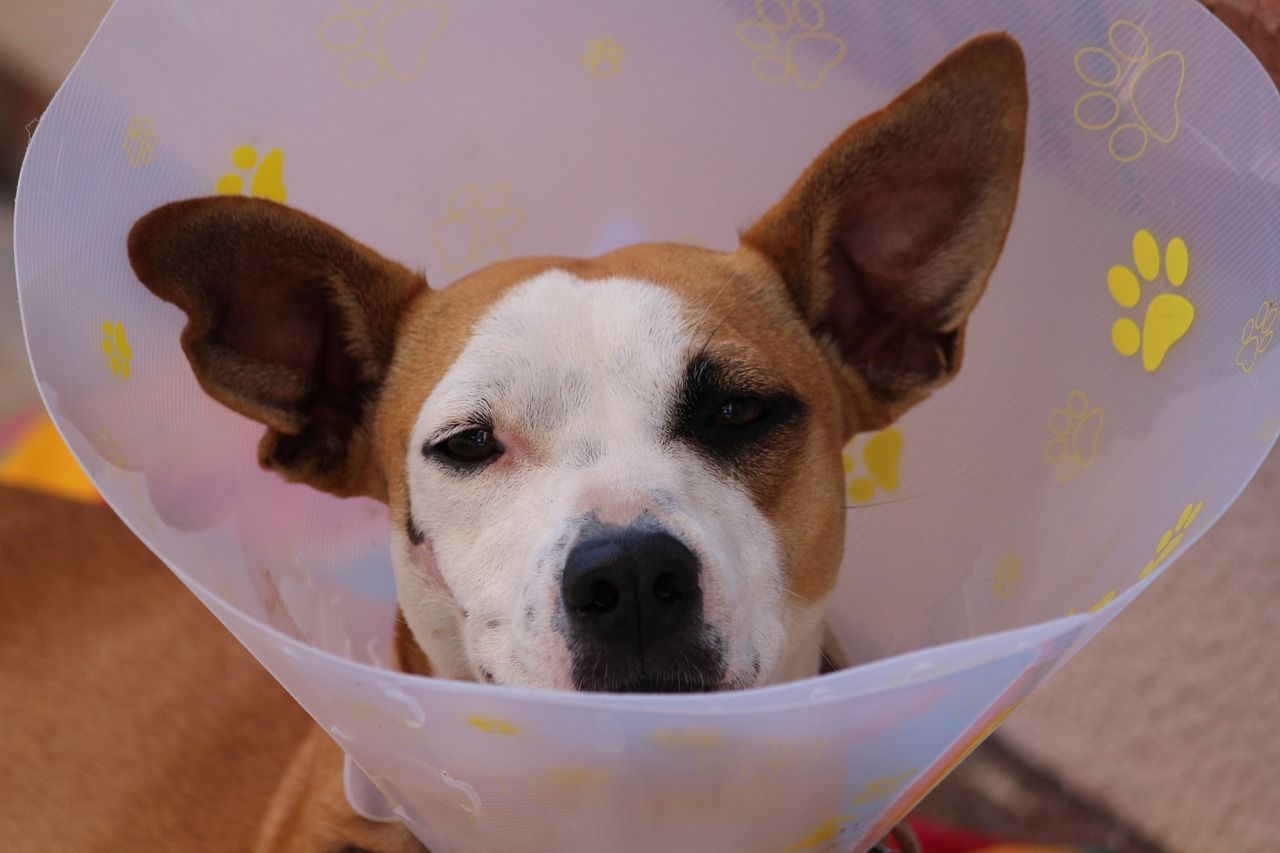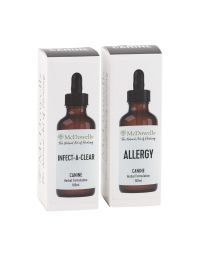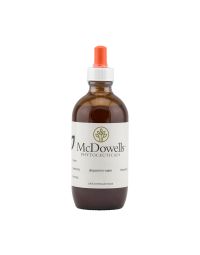Hot spots, or acute moist dermatitis, are one of the most common and frustrating skin issues seen in dogs. These inflamed, often infected lesions can appear suddenly and worsen rapidly - sometimes growing from a small patch of irritation in the morning to a large, raw area by nightfall...
But hot spots aren’t just a surface issue. They’re often the visible expression of deeper imbalances in the immune system, nervous system, or skin microbiome - sometimes even linked to dietary or metabolic stress. At McDowells, we approach hot spots not only as something to treat topically, but as a signal to look deeper, using natural, holistic tools to support your dog’s overall wellbeing.
What Are Hot Spots and what causes them?
Hot spots develop when a dog persistently licks, chews, or scratches at an area of irritation. This repetitive self-trauma damages the skin barrier, triggers inflammation, and allows bacteria or yeast to thrive, creating a cycle of itch-scratch-infection that can be difficult to break.
Some of the most common root causes of hot spots include:
- Allergies – Environmental allergens (pollens, grasses), food sensitivities, or chemical irritants can cause systemic inflammation and itching.
- Insect bites or parasites – Fleas, mites, or ticks may initiate intense local itching.
- Ear infections – Dogs scratching around the ears may create trauma that leads to hot spots on the face or neck.
- Matted fur or poor coat care – Tangled, damp fur can trap moisture and irritants against the skin, creating ideal conditions for infection.
- Anal gland irritation – Dogs licking the base of their tail or rectal area due to gland discomfort may develop lesions there.
- Orthopaedic discomfort – Dogs with joint issues may lick painful areas for relief, triggering hot spots on hips, hocks, or limbs.
- Boredom or anxiety - Repetitive licking or chewing can sometimes stem from emotional stress, highlighting the link between the nervous system and skin health.
From a holistic view, we also consider that blood toxins, sluggish lymph flow, and nervous system overactivity can make the skin more reactive. When the body can’t efficiently eliminate waste through its normal detoxification pathways (like the liver, kidneys, and bowels), the skin—our largest organ - often takes on the load. This can result in chronic irritation, redness, and eruptions like hot spots.
A natural approach to supporting skin healing
While managing hot spots typically involves preventing self-trauma (using protective collars, gentle bandaging, or calming the environment), we believe long-term healing requires addressing the root cause.
At McDowells, we take a whole-body approach to skin health by supporting the detox organs, calming the nervous system, and strengthening the immune response with herbs that have been used traditionally and in modern practice for these very purposes.
Our Holistic Skin & Hot Spot Program Includes:
Blood Cleansing Mix
A carefully selected blend of alterative herbs traditionally used to assist the organs of elimination - liver, kidneys, lymphatic system, and bowels. These herbs help to purify the blood and support healthy skin from the inside out.
This formulation includes echinacea to supports immune response and skin repair
- Garlic – Known for its antimicrobial and detoxifying properties
- Horsetail – Rich in silica, supporting skin integrity and healing
- Nettle – A nutrient-dense herb used to calm histamine responses
- Pine Bark – A powerful antioxidant that helps reduce inflammation
- Red Clover & Violet Leaf – Traditional blood purifiers with soothing effects on the skin
- Bach Flower Remedy: Crab Apple – Included for its energetic resonance with cleansing and purification
Infect-A-Clear & Yeast Support
Used in combination, these products assist in restoring balance to the skin microbiome - supporting the body’s own defences against bacterial and fungal overgrowth that often accompany hot spots.
Allergy Formula
Especially useful for dogs with known or suspected sensitivities. This formula supports the immune system in modulating overactive responses and may reduce the frequency of skin flare-ups.
We typically recommend a 12-week course - encompassing the full blood cycle - to gently and thoroughly address underlying imbalances that lead to hot spots.
Healing us more than skin deep
At McDowells, we understand that every animal is unique. Chronic skin issues like hot spots are rarely just "skin problems” - they are often a signal of something deeper asking for attention. Whether it's an overburdened immune system, emotional stress, or metabolic imbalance, our herbal formulations work gently but deeply to support healing from the inside out.
If you’re unsure where to begin, we’re here to help. Every dog’s body, and story, is different. We offer free consultations to help you choose the right support for your companion’s individual needs.


